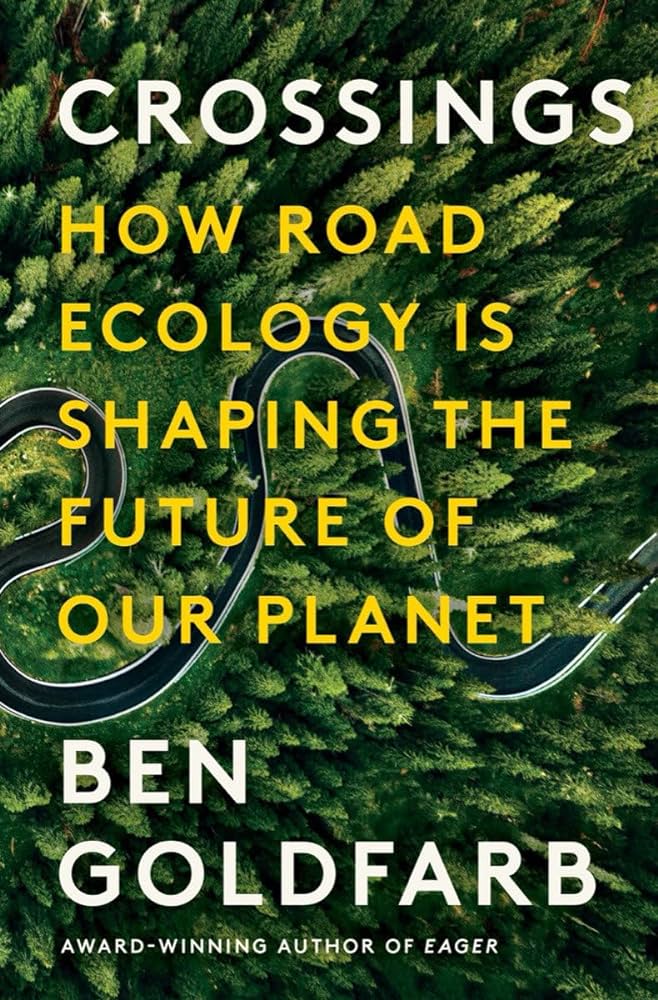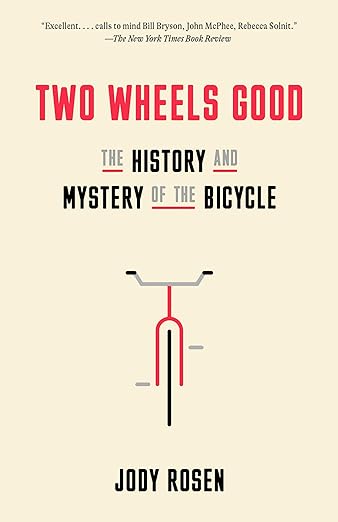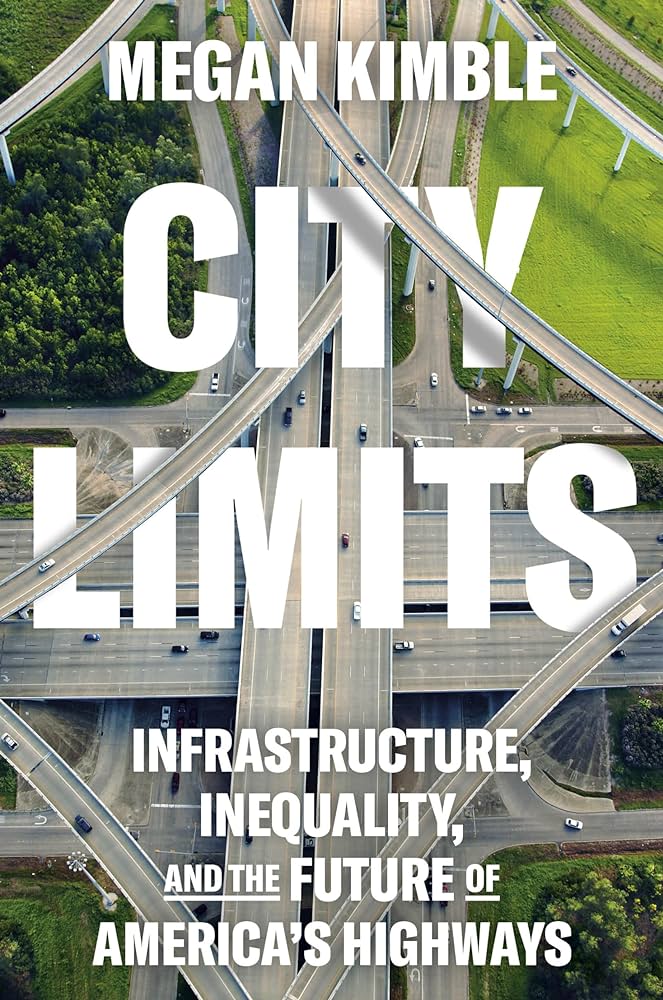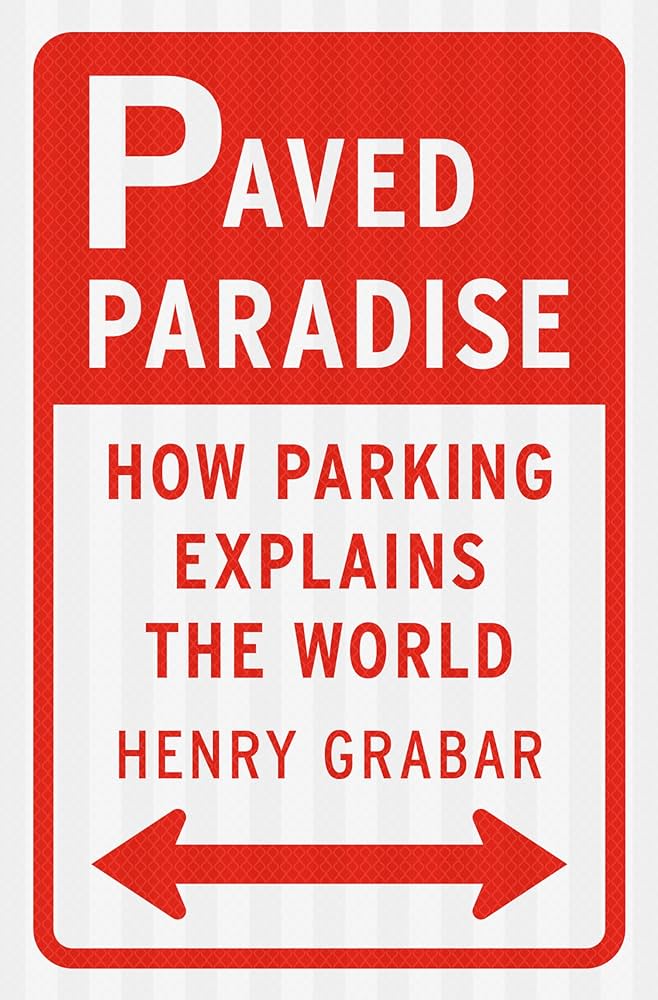June 14, 2024
For many, summer offers a chance to unwind—it’s the season to fritter away hours at the public pool, invite neighbors over for a barbeque, or hit the beach for a weekend. We believe the slowness of summer is also an opportunity for reflection, the season’s languidness offering space with which to examine our year-round preoccupations from a new angle.
At Kittelson, that means using our downtime to explore burgeoning perspectives in the transportation field. We’ve identified four books we recommend to anyone looking for a fresh way to think about the systems that help us get to the public park, or our neighbors to a barbeque, or our families to the beach. Although these books address longstanding and pressing questions in the transportation field, we promise that—in the spirit of summer—reading them won’t feel like homework.
Crossings: How Road Ecology is Shaping the Future of Our Planet

 Ben Goldfarb’s Crossings: How Road Ecology is Shaping the Future of Our Planet (2023) offers a transformative look at the almost unfathomable impact roadways have on the many species that call Earth home. After reading this book, you’ll never look at a road the same way again.
Ben Goldfarb’s Crossings: How Road Ecology is Shaping the Future of Our Planet (2023) offers a transformative look at the almost unfathomable impact roadways have on the many species that call Earth home. After reading this book, you’ll never look at a road the same way again.
An environmental journalist, Goldfarb reads roadways as distinct ecosystems, constrained and constraining spaces that force humans and animals to make difficult, often dangerous, and frequently fatal choices. Goldfarb tracks these choices like a naturalist, carefully describing early nineteenth century roadkill surveyors in Iowa, mule deer migrations in Wyoming, lovelorn cougars in Los Angeles, and a frog ferry in Portland, Oregon. Goldfarb’s studies are also global in scope. Readers ride along with Tasmania’s carers—compassionate people who sacrifice their money and time to rehabilitate wallabies, wombats, bettongs, and other wildlife injured or orphaned on Australian roads—and University of Cardiff researchers who collect biological samples from otters who have met their demise on UK roadways.
For a book chockablock with unsettling, hard truths, Crossings is ultimately a story of hope, a promise that although we’ve made grave mistakes in letting roadways snake through our landscapes nearly unchecked, all hope is not lost. But working to undo such an extensive and entrenched habit will require bold and radical roadway planning and engineering. Goldfarb cites the Carlos Botelho State Park in Brazil as a prime example of such iconoclastic thinking. A highway, SP-193, bisects the park, creating a paved rift in sensitive habitat and forcing animals to either risk a dangerous crossing or remain isolated in just half of the park. To protect its precious fauna, the state closes the highway between 8:00 p.m. and 6:00 a.m. to non-emergency vehicles—the time when the park’s nocturnal ocelots and jaguarundis are most active. Once the closure began, roadkill in the park plummeted and animals began to use the road at night.
Radical thinking need not always be so large. When culvert shelves designed to provide safe passage to small mammals under Highway 93 in Montana seemed to cater to everyone except the meadow vole—a food chain staple for the region’s carnivores—biologist Kerry Foresman headed to Home Depot. Returning to the culverts with freshly purchased plastic rain gutter, Foresman hung his ‘vole tubes’ from the shelves. For a meadow vole—a diminutive rodent that relies on dense grasses for cover—the exposed culvert shelves risked life and limb. But with the blissful protection of the plastic gutter, voles began scampering back and forth under the human-traveled asphalt safely and comfortably.
Foresman’s foray with plastic gutter and the humble meadow vole underscores one of Goldfarb’s most compelling points: roadway design offers an opportunity for humans to exercise interspecies empathy. Assuming a species-specific perspective—asking, for instance, how might a moose, or a bear, or a vole experience and wildlife overpass or underpass—forces us out of our anthropocentric framework and challenges us to then find design solutions that supports all species’ movements. Ultimately, Crossings is a treatise on the interconnectivity of life and movement on this planet. This book reminds us that our long history of roadway design choices has harmed animals, the environment, and ourselves and that the only way out is together.
Two Wheels Good: The History and Mystery of the Bicycle

 Jody Rosen’s Two Wheels Good: The History and Mystery of the Bicycle offers a peripatetic series of episodes all starring the humble bicycle as our Gumpian hero, gliding guilelessly across decades, political movements, and the globe to lend a hand, kill boredom, or stumble into revolution.
Jody Rosen’s Two Wheels Good: The History and Mystery of the Bicycle offers a peripatetic series of episodes all starring the humble bicycle as our Gumpian hero, gliding guilelessly across decades, political movements, and the globe to lend a hand, kill boredom, or stumble into revolution.
Although the book bills itself as a “history” of the bicycle, readers looking for a comprehensive timeline of the bicycle’s iteration into modernity may be disappointed. (In part because the bicycle has done remarkably little “iterating” at all: as Rosen observes, it arrived on the scene late and nearly perfect.) Instead, the book reads as a compilation of the bicycle’s showiest hits: spare a thought for the rickshawallahs of Dhaka, a cultural institution in Bangladesh, who brave one of the world’s least navigable cities every day to ferry around tourists, diplomats, and businesspeople even as the economics of their business render their very existences precarious; alternatively, consider the bikesexuals of Portland, Oregon, who, by literalizing a late-nineteenth-century anxiety that female liberation would spur sexual impropriety, mock and dismantle the anti-feminist and anti-queer attitudes that once cast the bicycle as a tool of social undoing.
Tooling around these different micro communities and historical flashpoints is at turns enjoyable and edifying—it made this reader, who has always been too shy to bike in busy cities, seriously consider getting into the saddle.
But what I found most invigorating about this collection of essays is the implied argument that emerges out of its patchwork of journalism, travelog, and historical scrutiny: that the bicycle’s ability to augment the human form (Rosen argues that riding a bike turns us into cyborgs) makes it an irresistible target for society’s anxious and aspirational projections. At various points throughout history, the very same bicycle has symbolized any number of opposites, including the epitome of dandy indulgence; a champion of a working class denied the luxury of the personal automobile; a marker of neighborhood gentrification; modernity; antiquity; a practical way to traverse space; a static tool for self-reflection. Although the bicycle changed how travel happens, it’s the bicycle’s ability to change us as travelers that has made it an enduring object of fascination and panic. In this way, the book is a testament to the fundamental power of mobility.
City Limits: Infrastructure, Inequality, and the Future of America’s Highways

 Reading Megan Kimble’s City Limits: Infrastructure, Inequality, and the Future of America’s Highways (2024) as a transportation professional is a humbling experience. In City Limits, Kimble, an investigative journalist, leads readers through the messy history of redlining and highway development in Houston, Dallas, and Austin, Texas, offering an inside, unflinching look at what happens when highway expansion comes up against grass-roots community organization.
Reading Megan Kimble’s City Limits: Infrastructure, Inequality, and the Future of America’s Highways (2024) as a transportation professional is a humbling experience. In City Limits, Kimble, an investigative journalist, leads readers through the messy history of redlining and highway development in Houston, Dallas, and Austin, Texas, offering an inside, unflinching look at what happens when highway expansion comes up against grass-roots community organization.
Her narrative flows deftly between politics and people, the ways that twentieth-century highway development constrained, segregated, and destroyed communities and the individual lives impacted by those changes. She untangles the political pressures and obligations of state and federal entities, weighing them against the hopes and dreams of the people whose homes and livelihoods find themselves in the right-of-way.
Reading this book puts practitioners on the other side of a public meeting. But Kimble’s narrative does not just ask readers to inhabit a disembodied public. Instead, she introduces us to individuals whose life experiences color how they move through the world. Among the many Texans Kimble interviewed for this book are Elda and Jesus Reyes, a couple whose tiny but beloved home would be swallowed up by the I-45 expansion in Houston; Mark Cook, a devoted father whose commutes from Houston suburbs to downtown ballooned to two hours each way; and Dina Flores, founder of Escuelita del Alma, the first Spanish-immersion preschool in Austin—a business smack in the middle of the I-35 expansion project. These are the same kinds of people whose comments appear on public surveys, who stop by at popup events, and who raise questions at stakeholder meetings. According to Kimble, their stories—and their activism—demand more empathy, compassion, and esteem from the engineers and planners whose maps and diagrams have the power to raze or rectify culture and community.
Transportation planners and engineers come out decidedly less favorably in City Limits, but Kimble’s criticisms sting with the ring of truth. She points out that rhetoric surrounding plans and development obfuscates the actor and shirks responsibility, complaining that “Everything happens in the passive voice: Agencies are engaged; stakeholders are consulted. Elected officials will be ‘visited with,’ while public feedback ‘is considered.’” At public meetings, engineers in City Limits stand next to boards and explain changes to traffic in jargon-riddled phrases.
Pick up this book when you start to feel frustrated with your job in transportation, when your unread emails tick up into the triple digits or when political strife uproots your carefully tended plans and designs, because City Limits is a reminder of our profession’s high stakes. It demands that we remember that what we do as transportation professionals is serve people and create community. We are here to help individual human beings with families, jobs, passions, and histories get where they need to go. We are also here to create the healthy, thriving spaces they can call home. More than a takedown of big highway, Kimble’s book is a call for compassion and connection in the planning industry.
Paved Paradise: How Parking Explains the World

 I approached Henry Grabar’s Paved Paradise: How Parking Explains the World suspicious that parking could indeed explain the world. But this book convinced me that parking has held an outsized grip on the way we build and live.
I approached Henry Grabar’s Paved Paradise: How Parking Explains the World suspicious that parking could indeed explain the world. But this book convinced me that parking has held an outsized grip on the way we build and live.
Grabar frames the mass proliferation of parking lots across American suburban and urban contexts as a byproduct of many converging (and sometimes conflicting) transportation agendas. At times a scapegoat trotted out to kill affordable housing, at other times a well-meaning but misguided effort to coax suburbanites back into American cities, the book examines the different forces behind parking proliferation and challenges the bedrock beliefs of American parking zoning for the past several decades, including commercial and residential parking minimums and free on-street parking. (Grabar draws from and summarizes Donald Shoup’s The High Cost of Free Parking throughout, meaning Paved Paradise functions as a helpful primer for those who don’t have the time or inclination to read this original—and 800 page long—critique of American parking practice.)
Paved Paradise becomes somewhat monotonous in its final chapters, as its calls to action to fix urban land use become clear (and then become clear again and again and again). But it’s tough to complain when Grabar’s writing is as lucid as it is. Additionally, Grabar complements his research with on-the-ground journalism, speaking with developers from all over the country to hear how myopic bureaucracy and traditional beliefs about parking have conspired to defeat developments focused on equitable placemaking and neighborhood walkability. These case studies helpfully imbue the discussion with a sense of real-world import; parking is an issue that affects people’s lives.
I emerged convinced that, while parking isn’t responsible for all the woes in American cities, very little about our cities can be fixed until we address our parking surplus. The book is a plea for context-dependent design, and for Americans to become not just comfortable with the idea of less parking but champions of it. The book is also an interesting meditation on valuing physical space as a “public” asset, arguing that, counterintuitively, the answer to more efficiently using the parking supply in American cities is to charge more valuation of physical space and of space as a “public” asset. The book meditates on the fundamental strangeness of the parking space as a tangible public asset with an unfixed, wildly fluctuating value. Grabar argues that America’s frustrations over a lack of parking, along with our inability to determine what a physical parking space is actually worth, has less to do with the amount of parking we actually have in our communities and more to do with the attachments we’ve formed to unrealistic standards of convenience and ease in travel.
What Are You Reading This Summer?
Like any club, the Kittelson Summer Book Club is only as good as its members. We want to hear from you! Get in touch with any thoughts on the books we’ve detailed above, or drop us a line to let us know what books are reshaping the way you think about transportation this summer. Happy reading!
